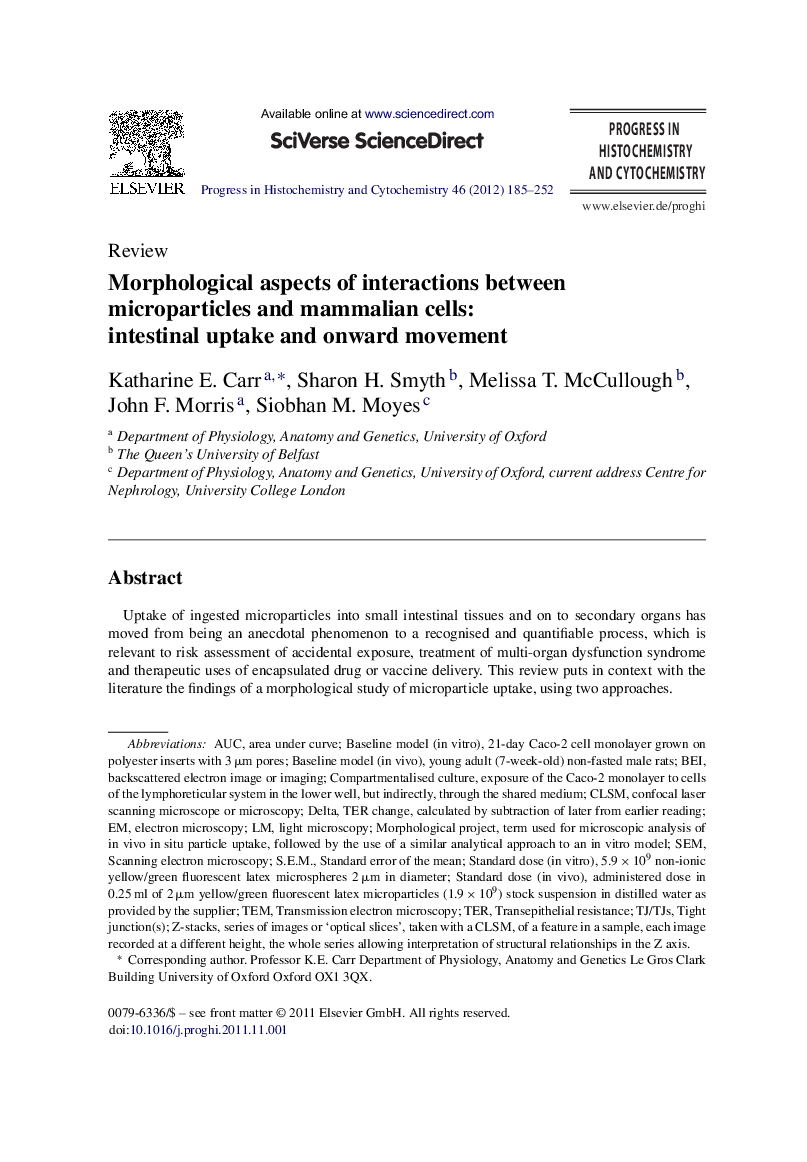| Article ID | Journal | Published Year | Pages | File Type |
|---|---|---|---|---|
| 2018982 | Progress in Histochemistry and Cytochemistry | 2012 | 68 Pages |
Uptake of ingested microparticles into small intestinal tissues and on to secondary organs has moved from being an anecdotal phenomenon to a recognised and quantifiable process, which is relevant to risk assessment of accidental exposure, treatment of multi-organ dysfunction syndrome and therapeutic uses of encapsulated drug or vaccine delivery. This review puts in context with the literature the findings of a morphological study of microparticle uptake, using two approaches.The first is a rat in vivo in situ model, appropriate to a study rooted in the exposure of human populations to microparticles. Latex microspheres 2 μm in diameter are the principal particle type used, although others are also investigated. Most data are based on microscopy, but analysis of macerated bulk tissue is also useful. Uptake occurs at early time points after a single dose and is shown to take place almost entirely at villous rather than Peyer's patch sites: however, multiple feeding and therefore a longer time-span produces a higher proportion of particles associated with Peyer's patches, albeit for very small total uptake at those later time points. Uptake is less affected by species, fasting and immunological competence than by age and reproductive status.The second approach uses in vitro methods to confirm the role of intercellular junctions in particle uptake. Particle-associated tight junction opening, in a Caco-2 monolayer, is reflected in changes in transepithelial resistance and particle uptake across the epithelial monolayer: Tight junction opening and particle uptake are both increased further by external irradiation, ethanol and sub-epithelial macrophages, but reduced by exposure to ice. An M cell model has looser tight junctions than Caco-2 cells, but a similar level of particle uptake. These results, along with the changes seen in junctional proteins after particle addition, confirm the role of tight junctions in uptake but suggest that adhering junctions are also important.
